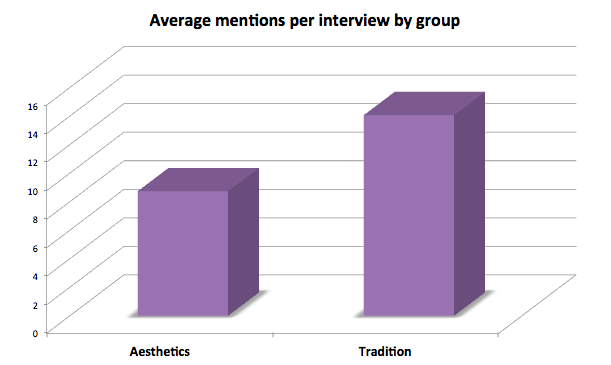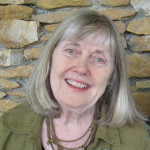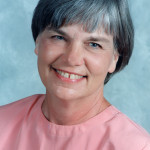[addtoany]
 Tradition and Aesthetics in QSOS Interviews
Tradition and Aesthetics in QSOS Interviews
By Barbara Brackman
Using the transcribed interviews in the Quilters’s S.O.S – Save Our Stories website I compared two lists of words used by the interviewees. I generated one list of ten words often used to describe aesthetics, such as “palette” and “composition,” and a second list of ten words used to describe tradition, for example, “grandmother” and “pioneer.” I chose 60 random interviews and assigned 30 to each group.
For each of the two groups I searched the transcribed interview using the Control+Find function on my computer and typed in the ten words. I scored the number of times each word was used by the interviewee and added up the scores for all ten words to give each interviewee a numerical score. I then determined the range over the group and the average number of appearances of the ten words for each group.
10 Aesthetic Words
Abstract Balance Composition Design Line Palette Rhythm Shape Style Surface
10 Tradition Words
Tradition Remember Inherit Story Pioneer Grandmother Past Vintage Old-fashioned Mother

Aesthetic Words: Range = 0-37 occurrences. Average = 8.73. Tradition Words: Range = 0-42 occurrences. Average = 14.06.
The groups showed little difference in the range of use. Some quilters did not use any of the words at all and got a 0 score. The average showed more difference between groups with tradition words occurring more than one and a half times as often as aesthetic words. (1.61% more.) Based on this small number one can assume that the QSOS interviewees are less likely to talk about art than about tradition.
The words most commonly used were “design” in the aesthetic group and “grandmother” in the tradition group with “mother” close behind. Words that were rarely used in the aesthetic group were “rhythm” (1 x) and “composition” (1 x). In the tradition group “old-fashioned” and “vintage” were each used only 1x over the 30 quilters.
My original idea was to analyze the current place of aesthetics by analyzing the recurrence of certain words. Searching for the aesthetic words led relatively nowhere because I couldn’t figure out how to compare interviewees. I couldn’t sort the interviewees by age because ages or dates of birth were not recorded, so could not compare a new generation of quilters to the older generation. I had intended to compare recent interviews during the popularity of “modern” quilts to older interviews, but found the interviews tended to date from 1999 to 2012, with very few in the past three years (e.g. 1 in 2013, 11 in 2012). So I abandoned my initial idea about looking at “today’s quilters” and focused more on developing a way to tabulate the interviews. I generated the list of tradition words to contrast to aesthetic words to see if the interviews might slant more that way, which they seem to do.
Methodology
As noted, I accessed the Browse function alphabetic index to Interviewees. I chose the 60 interviews arbitrarily by moving the slider up and down on the right side of the alphabetic list. I typed in the ten words for each person, looked at the count, and then checked by scrolling to be sure it was the interviewee using the word. Some words like “design” and “tradition” had more than one form (design, designing, designed, tradition, traditional) and I counted any variation if the meaning was the same.
Others like “past” would turn up as pastor or pastel with a different meaning and I did not count them. I counted the word if it had the same meaning even if the context was not what I intended. For design: “I don’t do any designing.” counted as a mention.
I kept a paper data sheet on each of the interviewers with the interviewee’s name, the date and the ten words I was looking for.
I gave each a total score for all the mentions. I then sorted them by highest and lowest scores and compiled a range, a total and an average for each of the two groups.
Suggestions for Future Research
The Control+F function is a good way to pull out words or phrases from the digitized interviews. As shown below in the top line, it counts the matches. I had to look at each match, however, to be sure it was the interviewee rather than the interviewer who used the word.
One could look at techniques or pattern names (e.g. many of the occurrences of “grandmother” were in relationship to the “grandmother’s flower garden” pattern). There might be ways to pull out quilt function as in “made for a wedding” or for a charity. Phrases might work better than just words because most of the occurrences of the word “story” were in the context like “It’s a long story,” rather than the idea of a story quilt as I had intended. “Remember” was ineffective because the context was usually “I don’t remember.” Phrases like “design wall” or “thread painting” might narrow in more on the intended meaning.
In Advanced Search on the website, one can sort interviews by date. Rather than compare random interviews one could select those, say in 2001 (95) versus those in 2010 (81) and see if differences over time can be pulled out by looking for words, phrases or ideas. One can also search by location, but I found the location is the place the interview was held, not the interviewees’s home towns. Looking at quilters interviewed in Houston (202) would not help in identifying any regional terms or ideas.
One option is to compare groups by how they identify themselves. I did find that members of the Studio Art Quilt Associates (SAQA) maintain an online list of their members who have been interviewed here.
Perhaps quilters who define themselves as studio artists would use different language.
One could also compare aesthetic words to tradition words within the same interview, which I did not do. Does a quilter who uses the word Grandmother also use the word composition?
One can also use the Advanced Search page to type in a keyword (“Transcript Keyword”) and this gives you an overview of the number of interviewees who used the keyword. Typing in “design” comes up with about 1200 hits—too much to deal with for the purposes of this study, but this search function is another way of getting at specific words and ideas. Perhaps one could put in a succinct idea like “palette” and go from there.
This model might inspire researchers in the fields of sociology, anthropology or semiotics to do further research.
2014 Ardis James QSOS Scholars
 Barbara Brackman, quilt historian, curator and teacher. Barbara is the author of a number of books about quiltmaking and quilt history including the Encyclopedia of Pieced Quilt Patterns and Clues in the Calico: A Guide to Identifying and Dating Antique Quilts and was inducted into the Quilters Hall of Fame in 2001.
Barbara Brackman, quilt historian, curator and teacher. Barbara is the author of a number of books about quiltmaking and quilt history including the Encyclopedia of Pieced Quilt Patterns and Clues in the Calico: A Guide to Identifying and Dating Antique Quilts and was inducted into the Quilters Hall of Fame in 2001.
View Barbara’s project: Tradition and Aesthetics in QSOS Interviews
 Christine Humphrey earned her doctorate and master’s degree from the University of Nebraska-Lincoln where she specialized in textile history with a quilt studies emphasis. Her scholarship has focused on the roots of American quilt documentation projects from 1980-1989.
Christine Humphrey earned her doctorate and master’s degree from the University of Nebraska-Lincoln where she specialized in textile history with a quilt studies emphasis. Her scholarship has focused on the roots of American quilt documentation projects from 1980-1989.
View Christine’s project: “Passing on a Little Bit of Who I Am”: The Transmission of Quiltmaking to a New Generation
 Merikay Waldvogel, author, quilt historian and lecturer. Merikay has written several books about quilts in the 20th century, including Soft Covers for Hard Times: Quiltmaking and the Great Depression and, with Bets Ramsey, Quilts of Tennessee: Images of Domestic Life Prior to 1930. She was inducted into the Quilters Hall of Fame in 2009.
Merikay Waldvogel, author, quilt historian and lecturer. Merikay has written several books about quilts in the 20th century, including Soft Covers for Hard Times: Quiltmaking and the Great Depression and, with Bets Ramsey, Quilts of Tennessee: Images of Domestic Life Prior to 1930. She was inducted into the Quilters Hall of Fame in 2009.
View Merikay’s project: Memories of the Late 20th Century Quilt Scene: Linda Claussen’s QSOS Interview

